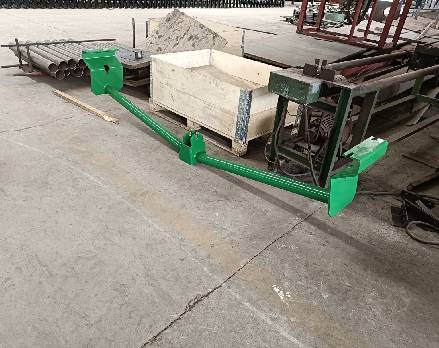 Afrikaans
Afrikaans  Albanian
Albanian  Amharic
Amharic  Arabic
Arabic  Armenian
Armenian  Azerbaijani
Azerbaijani  Basque
Basque  Belarusian
Belarusian  Bengali
Bengali  Bosnian
Bosnian  Bulgarian
Bulgarian  Catalan
Catalan  Cebuano
Cebuano  Corsican
Corsican  Croatian
Croatian  Czech
Czech  Danish
Danish  Dutch
Dutch  English
English  Esperanto
Esperanto  Estonian
Estonian  Finnish
Finnish  French
French  Frisian
Frisian  Galician
Galician  Georgian
Georgian  German
German  Greek
Greek  Gujarati
Gujarati  Haitian Creole
Haitian Creole  hausa
hausa  hawaiian
hawaiian  Hebrew
Hebrew  Hindi
Hindi  Miao
Miao  Hungarian
Hungarian  Icelandic
Icelandic  igbo
igbo  Indonesian
Indonesian  irish
irish  Italian
Italian  Japanese
Japanese  Javanese
Javanese  Kannada
Kannada  kazakh
kazakh  Khmer
Khmer  Rwandese
Rwandese  Korean
Korean  Kurdish
Kurdish  Kyrgyz
Kyrgyz  Lao
Lao  Latin
Latin  Latvian
Latvian  Lithuanian
Lithuanian  Luxembourgish
Luxembourgish  Macedonian
Macedonian  Malgashi
Malgashi  Malay
Malay  Malayalam
Malayalam  Maltese
Maltese  Maori
Maori  Marathi
Marathi  Mongolian
Mongolian  Myanmar
Myanmar  Nepali
Nepali  Norwegian
Norwegian  Norwegian
Norwegian  Occitan
Occitan  Pashto
Pashto  Persian
Persian  Polish
Polish  Portuguese
Portuguese  Punjabi
Punjabi  Romanian
Romanian  Russian
Russian  Samoan
Samoan  Scottish Gaelic
Scottish Gaelic  Serbian
Serbian  Sesotho
Sesotho  Shona
Shona  Sindhi
Sindhi  Sinhala
Sinhala  Slovak
Slovak  Slovenian
Slovenian  Somali
Somali  Spanish
Spanish  Sundanese
Sundanese  Swahili
Swahili  Swedish
Swedish  Tagalog
Tagalog  Tajik
Tajik  Tamil
Tamil  Tatar
Tatar  Telugu
Telugu  Thai
Thai  Turkish
Turkish  Turkmen
Turkmen  Ukrainian
Ukrainian  Urdu
Urdu  Uighur
Uighur  Uzbek
Uzbek  Vietnamese
Vietnamese  Welsh
Welsh  Bantu
Bantu  Yiddish
Yiddish  Yoruba
Yoruba  Zulu
Zulu lagged head pulley
Understanding Lagged Head Pulleys in Conveyor Systems
In the world of material handling and conveyor systems, the importance of head pulleys cannot be overstated. Among the various types of head pulleys, the lagged head pulley stands out due to its enhanced performance and efficiency. This article delves into the mechanics of lagged head pulleys, their applications, benefits, and considerations for maintenance.
What is a Lagged Head Pulley?
A lagged head pulley is essentially the driving force in a conveyor system. It is situated at the discharge end of the conveyor belt and is designed to improve the traction and grip between the belt and the pulley. The lagging refers to the additional layer of material that is applied to the surface of the pulley. This layer can be made from various materials such as rubber, ceramic, or other designed composites, which significantly aim to increase friction and reduce slippage.
Applications
Lagged head pulleys are widely used in a variety of industries, including mining, agriculture, manufacturing, and waste management. They are particularly advantageous in applications where the conveyor system is subject to heavy loads, steep inclines, and adverse environmental conditions. The lagging enables these pulleys to handle wet or slippery materials without losing traction, ensuring that the conveyor system operates efficiently.
Benefits of Lagged Head Pulleys
1. Enhanced Grip The primary benefit of lagging is the increased grip it provides. This is crucial for preventing belt slippage, which can lead to material loss and reduced efficiency.
2. Durability Lagged head pulleys are generally more durable than their non-lagged counterparts. The added layer of material helps protect the pulley from wear and tear, ultimately extending its lifespan.
3. Reduced Maintenance With improved grip and durability, lagged head pulleys require less frequent maintenance. This results in reduced downtime and lower operational costs.
lagged head pulley

4. Versatility Lagged head pulleys can be customized according to specific needs. Different lagging materials can be selected based on the type of materials being transported, temperature conditions, and environmental factors.
Considerations for Maintenance
Although lagged head pulleys provide numerous advantages, they still require regular maintenance to ensure optimal performance. Here are a few considerations
1. Visual Inspections Regular inspections should be conducted to identify signs of wear on both the lagging and the pulley itself. Early detection of damage can prevent more significant issues down the line.
2. Cleaning Accumulation of material on the pulley surface can reduce the effectiveness of the lagging. Regular cleaning is essential to maintain grip and functional efficiency.
3. Alignment Checking Proper alignment of head pulleys and the conveyor system as a whole is vital. Misalignment can lead to uneven wear on the lagging and can affect the operational efficiency of the conveyor system.
4. Replacing Lagging Eventually, the lagging will wear down and will need to be replaced. The frequency of replacement will depend on the operational environment, load conditions, and the material being conveyed.
Conclusion
Lagged head pulleys play a crucial role in enhancing the performance of conveyor systems. Their ability to provide enhanced traction, coupled with durability and reduced maintenance needs, makes them an invaluable component in various industrial applications. As industries continue to focus on efficiency and optimization, understanding and implementing lagged head pulleys will undoubtedly be at the forefront of material handling advancements.
-
Revolutionizing Conveyor Reliability with Advanced Rubber Lagging PulleysNewsJul.22,2025
-
Powering Precision and Durability with Expert Manufacturers of Conveyor ComponentsNewsJul.22,2025
-
Optimizing Conveyor Systems with Advanced Conveyor AccessoriesNewsJul.22,2025
-
Maximize Conveyor Efficiency with Quality Conveyor Idler PulleysNewsJul.22,2025
-
Future-Proof Your Conveyor System with High-Performance Polyurethane RollerNewsJul.22,2025
-
Driving Efficiency Forward with Quality Idlers and RollersNewsJul.22,2025





























